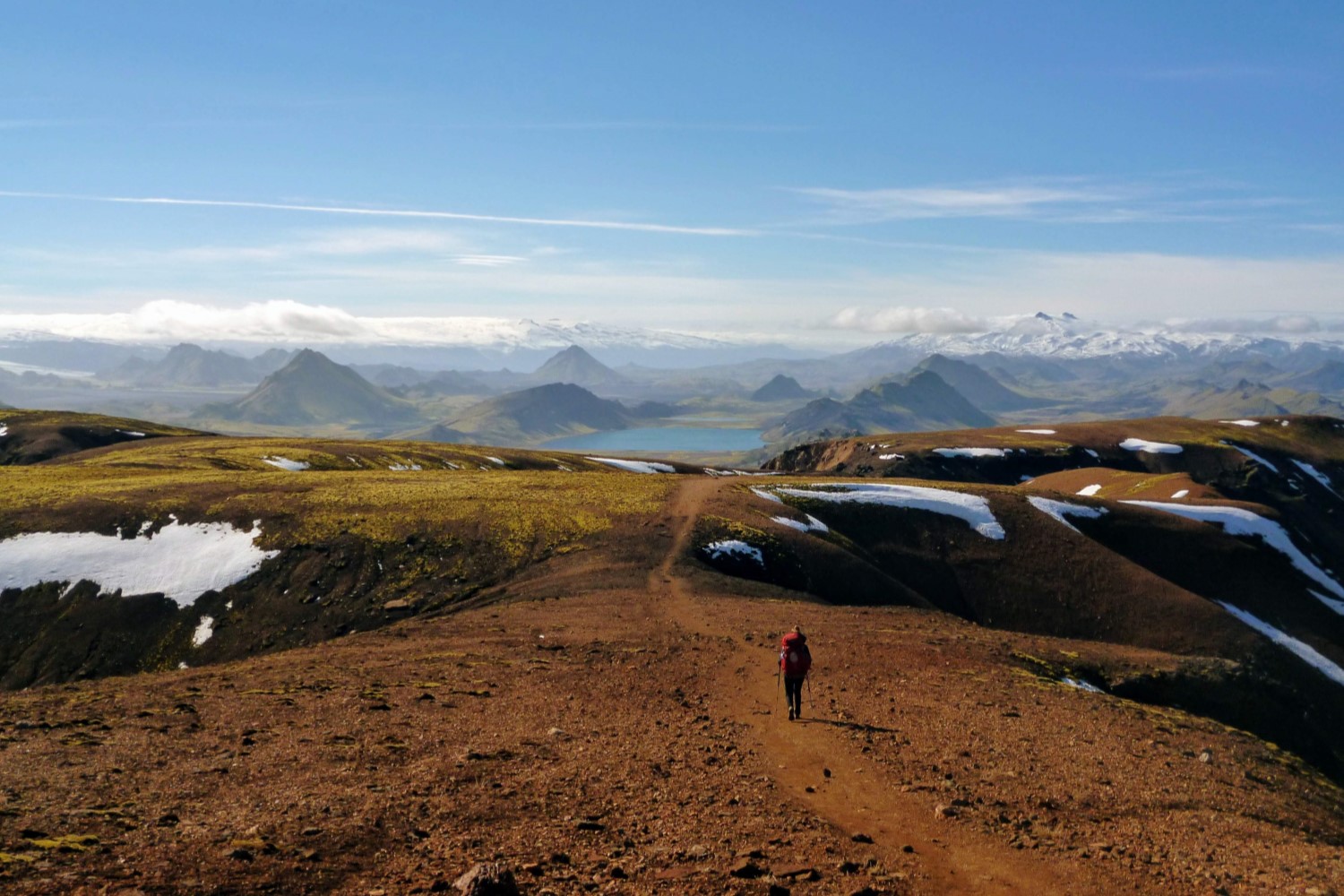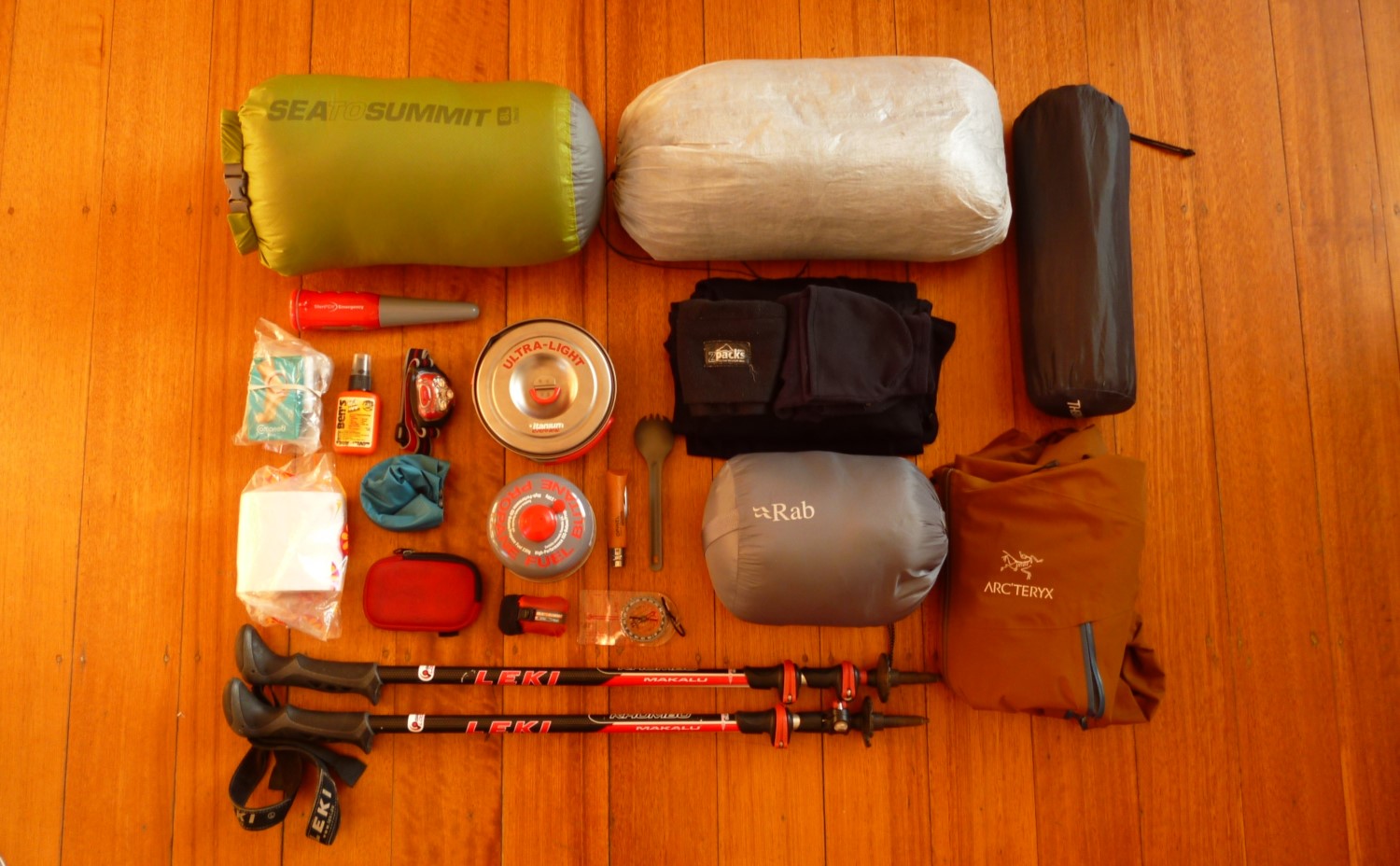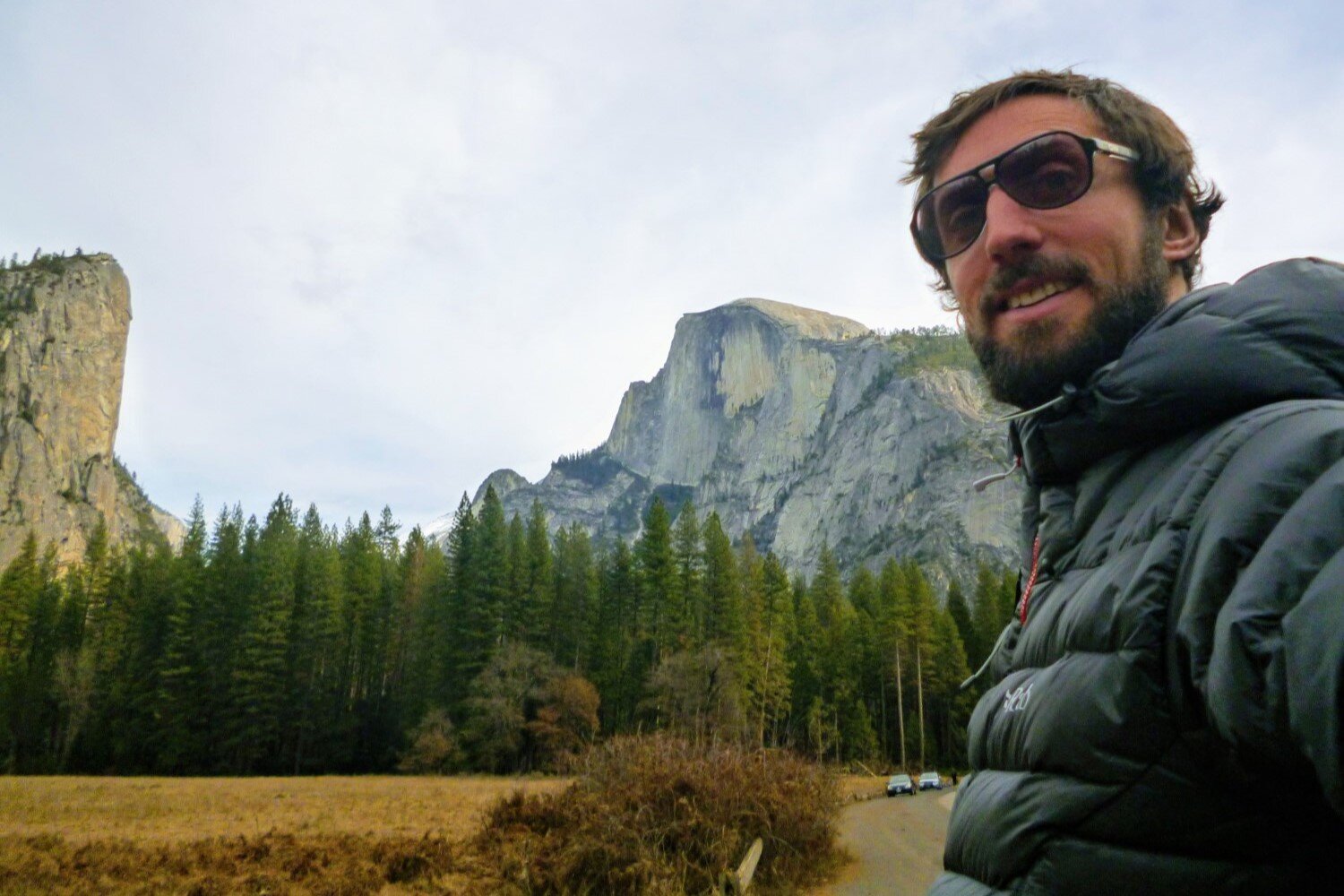Best Bikepacking Bikes of 2023 (…& how to choose one)
JUMP TO: TYPES OF BIKEPACKING BIKE / KEY CONSIDERATIONS / BEST BIKEPACKING BIKES
Author: Tristan Ridley | Updated: Nov 12, 2022
We may earn a commission when you buy through our links. Learn more.
Shopping for a new bike can be a daunting task, regardless of what your intended use might be. There is a dizzying array of bicycles to choose from, and the differences between bikes can often be subtle.
Searching for a bike to use for bikepacking further complicates things, as there are a number of extra considerations, and it’s important to make sure you’re buying the right machine for the job.
The first thing we’d always say, to anyone looking to go bikepacking, is that you don’t need the perfect bike; you don’t need to go out and spend a fortune on something expensive.
Part of the appeal of bikepacking is in its approachability – you can go bikepacking on just about anything.
If you already have a bicycle, chances are it’ll make for a perfectly good bikepacking bike, so we’d usually suggest using that, at least while you’re getting started.
Your ideal bikepacking bike depends on the type of conditions you will usually encounter. Photo credit: Tristan Ridley.
That said, a purpose-built bikepacking machine will have a lot of significant advantages and can make for a much better ride, especially when taking on longer or more challenging routes.
In this guide, we’ll go over the main things to consider in choosing a bike and give you some suggestions for highly rated bikes in a variety of categories. You’re never going to have the perfect bike for all situations, but by considering the kind of riding you will usually be doing, you can find the best bikepacking bike for you.
If you love reading this review of the best bikepacking bikes, then you'll likely love reading some of our other bikepacking related pages:
Love the imagery in this article? Check out more @tristanrid.
TYPES OF BIKEPACKING BIKE
Although there is often overlap between different disciplines, for simplicity we’ll look at five primary bicycle types: gravel bikes, plus bikes, rigid (all-road) mountain bikes, hardtail mountain bikes, and full-suspension mountain bikes.
We’ll consider some of the pros and cons of each, as well as some of their intended applications. At the bottom of the article we’ll list some of our favorite bikes in each category.
A gravel bike can make an awesome bikepacking bike for predominantly smoother surfaces — it is fast and efficient, whilst still being able handle the occassional dirt or gravel road.
Gravel Bikes
Gravel bikes are all the rage these days, and if you plan to ride mostly on relatively smooth surfaces then a good gravel bike may well be your best bet.
With a similar drop-bar design to road bikes, but with a more relaxed riding position, clearance for wider tires, and usually a stronger frame, gravel bikes can make for excellent bikepacking machines. A gravel bike is still fast and efficient on road, but also has the versatility to venture onto dirt roads and doubletrack. Even singletrack is possible, although you probably won’t have much fun if you start taking your gravel bike onto rowdier trails.
This is one of the limitations of gravel bikes – although they can handle some singletrack, especially if it’s relatively smooth and flowy, we definitely wouldn’t recommend them for anything super rough. The same is true of very rough dirt roads, where wider tires and/or suspension will make things much more comfortable. Because they’re so lightweight, you also need to be careful about overpacking with gravel bikes, as they’re not designed to carry a lot of weight, especially on rougher ground.
A gravel bike could be right for you if you don’t expect to ride too much singletrack, don’t ride anything too rough, and want the versatility of still being fast and efficient on paved surfaces. If road riding makes up a significant percentage of your routes, but you also want the flexibility of being able to tackle some light off-road, a gravel bike is the one for you.
For long-term or remote bikepacking expeditions an all-road rigid mountain bike is ideal — they provide more strength and off-road capability than a gravel bike, but avoid the maintenance overhead of having front or full suspension. Photo credit: Tristan Ridley.
All-Road/Rigid Mountain Bikes
If you like the idea of a gravel bike but worry that it won’t be tough enough or comfortable enough to handle some rougher riding, going for an all-road or rigid mountain bike could be a great choice.
These come in a variety of styles, some that lean more towards gravel riding and others that are much closer to mountain bikes. These bikes usually have clearance for much wider tires than gravel bikes, and they generally have stronger frames and wheels to match. This makes them heavier, but also much tougher, and therefore better suited to rougher riding, heavier loads, and long-term expeditions.
These are a great choice if you want an all-rounder that will let you ride just about anything without too much fuss. It won’t be as fast as a gravel bike on smoother surfaces, and it won’t let you bomb through extremely rough or technical terrain as quickly and comfortably as a plus or suspension bike, but this type of bike will do just about anything reasonably well.
Lacking suspension means you won’t have to worry about maintenance as much, which is a real advantage on longer trips – these are the bikes usually favored by those setting out on exceptionally long-distance bikepacking trips. If you want a bike to cycle around the world on, these are probably your best bet.
For bikepacking on rough and technical singletrack a hardtail mountain bike might be your best bet — the tradeoff being additional weight and maintenance of the front suspension fork.
Hardtail Mountain Bikes
For bikepacking primarily on singletrack, with a healthy dose of dirt road and doubletrack mixed in, a good hardtail could well be the bike you want.
A suspension fork makes riding on rough ground much more comfortable and can make a huge difference for riding on technical or rocky terrain. Most modern forks can also be locked out, for close-to-rigid efficiency on smoother surfaces.
On the downside, a suspension fork will usually be quite a bit heavier than a rigid equivalent, so it may be unnecessary if your routes aren’t too rough or technical. A suspension fork also requires regular maintenance, so it’s not usually favored by those taking on longer expeditions, especially to more remote parts of the world where equipment failure could be disastrous.
That said, suspension is undoubtedly nice to have, and hardtails don’t have to make too many sacrifices to get it. Hardtails are much more efficient than full-suspension bikes, and they’re also usually a lot cheaper. If your bikepacking trips tend to be on rough ground or a lot of singletrack, and if they’re not usually going to extend beyond more than a few weeks at a time (or if you don’t mind the cost and effort of maintaining the fork whilst on tour), then a hardtail will likely be perfect.
Plus bikes perform great on loose surfaces like sand or deep gravel, whilst also providing more cushion and traction on rough surfaces. Photo credit: Trek Bikes.
Plus Bikes
Also known as ‘mid-fat’, a plus bike is a bicycle designed around tires ranging from 2.6” to 3.0” in width. The extra width makes for far more air volume, which provides significantly more cushion than regular mountain bike tires, as well as increased traction and rollover. Plus-tires also fare much better on loose surfaces such as sand or deeper gravel, to the extent that some routes can almost require them.
A rigid plus bike is naturally well suited to rougher terrain bikepacking as it provides a measure of comfort on rough ground, but without the complexity and maintenance that comes with suspension.
Depending on where you live or where you want to ride, a plus bike can also expand your route choices to allow you to ride in places that might not even be possible with skinnier rubber.
An excellent plus bike option — designed specifically for bikepacking — and included in our list of favorite bikes below, is the Trek 1120.
Weight is one of the main downsides to plus bikes; bigger tires also require wider rims, and both of these can make your bike feel substantially heavier. Plus bikes tend to be slower too – wider tires are not inherently slower than thinner ones, but plus tire treads do tend to come with a higher rolling resistance, so you’re unlikely to be traveling especially quickly.
Plus bikes are good for many of the same applications as hardtails, and whether you’re going to be better off on a plus bike or hardtail will depend largely on where you intend to ride. The big tires dampen much of the vibrations from rough riding but aren’t a true substitute for a proper suspension fork when it comes to technical riding and very rocky ground. That said, there’s something to be said for the simplicity and maintenance-free aspect of a rigid bicycle. And if you live somewhere with a lot of loose trails where you’d benefit from the extra grip of a plus tire, it’ll be an easy choice.
Full-suspension bikes are less commonly used for bikepacking due to a reduction in pedalling efficiency, but they are smooth on singletrack and fun to ride!
Full-Suspension Bikes
Full-suspension bikes are probably the least commonly used bikes for bikepacking, but that doesn’t mean they’re necessarily a bad choice, and for some routes, they can be outstanding. For routes that are predominantly on very rough and technical singletrack, full-suspension bikes will be in a league of their own, able to bomb through in comfort where other bikes will have to be far more cautious.
Full-suspension bikes are a lot of fun to ride, and there’s certainly nothing stopping you from strapping on some gear and taking your full-sus bikepacking.
That said, full-suspension bikes to do have a number of disadvantages, and for most riders, a hardtail is likely to be a better option on most routes. Full-suspension bikes are less efficient to pedal, making them less than ideal for longer routes, especially if there will be a reasonable amount of non-singletrack riding. They are also vastly more expensive than equivalent hardtails and will require more maintenance. Frame bag space is also much more limited on a full-sus.
None of these are enormous issues, and if you already have a full-suspension mountain bike then we’d certainly encourage trying it for some bikepacking (you’ll have a blast), but if you were looking to buy a bike specifically for general bikepacking use, we probably wouldn’t recommend a full-suspension for most people.
That’s not to say there aren’t some fantastic bikepacking-ready full-suspension bikes on the market. We’d recommend going for a short travel full-suspension bike, like the Ibis Ripley, the Salsa Spearfish, or the Santa Cruz Tallboy.
KEY CONSIDERATIONS FOR BIKEPACKING BIKES
Terrain & Riding style
There are so many different types of bikepacking bikes on the market these days that it’s essential to start by deciding what style of bikepacking you’re going to be doing.
There’s no right or wrong way to go bikepacking, but bikes vary dramatically depending on their intended use. A bike designed for gravel roads isn’t going to be much fun on heavily technical singletrack, but on the other hand, the ideal bike for that singletrack section isn’t going to be ideal for the gravel route either.
choose a bikepacking bike that matches the terrain you will mainly be riding on — will it be singletrack, gravel, or pavement?
It’s always going to be about compromise to some extent, but by taking some time to think about the kinds of routes you expect to be on most of the time, you can ensure that you’ve at least usually got the best bike for the job.
Are you more into mountain biking, and looking to ride bikepacking routes with as much singletrack as possible? If so, how technical? Or do you prefer to stick to mostly gravel roads and doubletrack? For many people, it may be a combination of both.
In many cases, the kind of riding you expect to spend most of your time doing will be determined geographically. What is the terrain like in the area around where you live? Think about some of the places or routes you’d like to explore. Will it be singletrack, gravel, or pavement? How rough, and how technical? Once you’ve figured out which kinds of routes you’ll be riding, it’ll be much easier to find a bike that’s best suited for it.
Wheel Size
Bikes are generally designed around one of three different wheel sizes; 26”, 27.5” (also known as 650b), and 29” (29er wheels are also known as 700c for road or gravel bikes).
Although there are plenty of older bikes that use 26” wheels, and there’s nothing wrong with them, the 26” wheel size is being gradually phased out by the bicycle industry. As time goes on it’ll only become harder to find 26” components, so overall this isn’t a wheel size we’d recommend.
Between 27.5” and 29” wheels, there is no ‘best’ choice – it comes down to personal preference.
27.5” wheels are slightly lighter, accelerate more quickly, and are more agile, allowing for faster and more responsive steering. For smaller riders they are usually the better choice, providing more clearance for bikepacking bags between the handlebars/saddle and the tires.
29er wheels on the other hand tend to be slightly faster over open ground, the bigger wheels being better at maintaining momentum. 29ers also have better rollover, which is great on rooty or corrugated ground. If you’re a larger rider, a 29er might suit you better.
Tire Width
This will be largely limited by the bike frame you choose, but generally speaking, wider tires will provide greater comfort and grip, at the expense of increased weight and rolling resistance.
Tire width should be matched to the majority of terrain you plan to ride. Photo credit: Tristan Ridley.
You should match your tire choice to the terrain you want to ride – the rougher and looser the ground, the wider you’ll want your tires to be. If you expect to be doing a fair amount of riding on sand, snow, or very loose gravel, a bike with plus (2.6” to 3”) tires may be necessary.
Gearing
A bikepacking bike should ideally have lower gearing than a bike designed to be ridden unloaded, something you’ll really appreciate when carrying the extra weight of all your gear.
Many modern bikes opt for a single front chainring (1x) system as opposed to a more traditional 2x front derailleur setup. There are benefits to both – a 1x has an advantage in simplicity and weight, both of which are appreciated for bikepacking.
On the other hand, a 2x gives you greater gear range and is slightly more efficient. Either will work fine, though if you intend to take on a lot of hills, we’d suggest paying particular attention to your bottom (granny) gear.
This is an excellent and easy-to-use calculator for working out how low your bottom gear will be in gear inches (how far forward your bike will go with one turn of the pedals). For bikepacking, we’d ideally recommend aiming for a granny gear of 20 gear inches or less, although gravel bikes, in particular, may be able to get away with something a little higher.
Frame Material
There are four primary materials used by bike manufacturers today – Aluminum, Steel, Carbon Fiber, and Titanium. All are fine, and your decision will likely be dictated by budget.
Aluminum frames are the cheapest, and are relatively lightweight, although some people find them slightly less comfortable than the others as they flex less, doing less to absorb road vibrations.
Steel frames are usually the strongest, and provide good comfort, making them a favorite of expedition cyclists, although they are also significantly heavier than the other frame types.
Carbon is exceptionally lightweight and comfortable but is also very expensive, and carbon is also much less durable than the other materials.
Titanium is the rarest of the four and is in many ways the ultimate frame material for bikepacking bikes, combining the strength of steel with the comfort and minimal weight of carbon, though unfortunately it also shares carbon’s very hefty price tag!
Riding Position & Handlebar Style
For bikepacking, we’d advise setting up your bike with a more relaxed riding position than you might have on something like a road bike. You’ll likely be spending a lot more time in the saddle, so a slightly more upright riding position will be much more comfortable in the long term.
Whether you prefer a drop bar or flat handlebar bike is largely down to personal preference. Drops give multiple hand positions, which can be great on longer rides, whilst flat handlebars allow for greater control over technical surfaces.
Flat bars and/or a front shock can help with technical routes. Photo credit: Tristan Ridley.
Match your handlebar with the kind of riding you expect to be doing – there’s nothing to say you can’t ride technical singletrack on drop bars, but you’ll probably find it easier on a flat bar. That said, if you feel more comfortable on drops then you should by all means go for drops!
Suspension
Whether you choose to use suspension will largely depend on where you want to ride. Although there are certain routes that merit full-suspension (and they can be a lot of fun), for the most part, we wouldn’t suggest choosing a full-suspension as your primary bikepacking bike.
A front shock can be an excellent choice, however, smoothing out the ride and giving a substantial advantage on harsh, technical routes.
The downside is that suspension is heavier than rigid, can be less efficient (though also sometimes more efficient, depending on terrain), and has increased complexity. This complexity means more maintenance and one more part which can fail. Close to home, this will likely be a non-issue, but for longer expeditions, particularly to more remote parts of the world, this can be a major deciding factor.
BEST BIKEPACKING BIKES
In this section we’ve listed some of our favorite bikes in the aforementioned bikepacking categories.
Many of these bikes come in multiple different configurations to suit your budget — so you will need to factor that into your purchasing decision. We’ve simply aimed to give a broad overview of the models and options.
In addition to checking out these models, do make sure you’ve read our key considerations (i.e. buying advice) section above — it contains a shit-ton of useful tips for selecting the right bikepacking bike for your journey.
Note: As of early 2021, there is currently a major international bike shortage, caused by a massive increase in demand due to Covid-19 lockdown measures, as well as a dramatic simultaneous reduction in manufacturing, due to factory closures and restrictions. The bikes we’ve linked are some of the best on the market, and therefore may be sold out, but global supplies should hopefully improve soon.
CATEGORY: Gravel
FRAME OPTIONS: Aluminum, Carbon
PRICE RANGE: USD $1150 to $9500
CATEGORY: Gravel
FRAME OPTIONS: Aluminum, Carbon
PRICE RANGE: USD $1700 to $6000
CATEGORY: Gravel
FRAME: Steel
PRICE: USD $2750
Kona Sutra LTD
CATEGORY: All-Road / Rigid
FRAME: Carbon
PRICE RANGE: USD $2900 to $5800
CATEGORY: All-Road / Rigid
FRAME: Steel
PRICE RANGE: USD $1155 to $1255
CATEGORY: Hardtail
FRAME: Aluminum
PRICE RANGE: USD $1700 to $2000
CATEGORY: Hardtail
FRAME: Steel
PRICE RANGE: USD $1675 to $2300
CATEGORY: Hardtail
FRAME: Aluminum
PRICE RANGE: USD $1350 to $2450
CATEGORY: Plus (aka Mid-Fat)
FRAME: Aluminum
PRICE: USD $2700
CATEGORY: Plus (aka Mid-Fat)
FRAME: Steel
PRICE: USD $2000
CATEGORY: Hardtail Plus (aka Hardtail Mid-Fat)
FRAME: Steel
PRICE RANGE: USD $1675 to $2350
CATEGORY: Full Suspension
FRAME: Carbon
PRICE RANGE: USD $4200+
CATEGORY: Full Suspension
FRAME OPTIONS: Aluminum, Carbon
PRICE RANGE: USD $2650 to $7500
CATEGORY: Full Suspension
FRAME OPTIONS: Aluminum, Carbon
PRICE RANGE: USD $2800 to $10500
MORE INFORMATION
So there you have it, your ultimate guide to choosing the best bikepacking bike! Hopefully you found something useful in there to help you get rolling.
If you loved this gear review article, then you'll likely love reading our other gear-fiend related articles:
Or check out our Introduction to Bikepacking — it’s full of all kinds of hints and tips to help you get started with bikepacking.






















